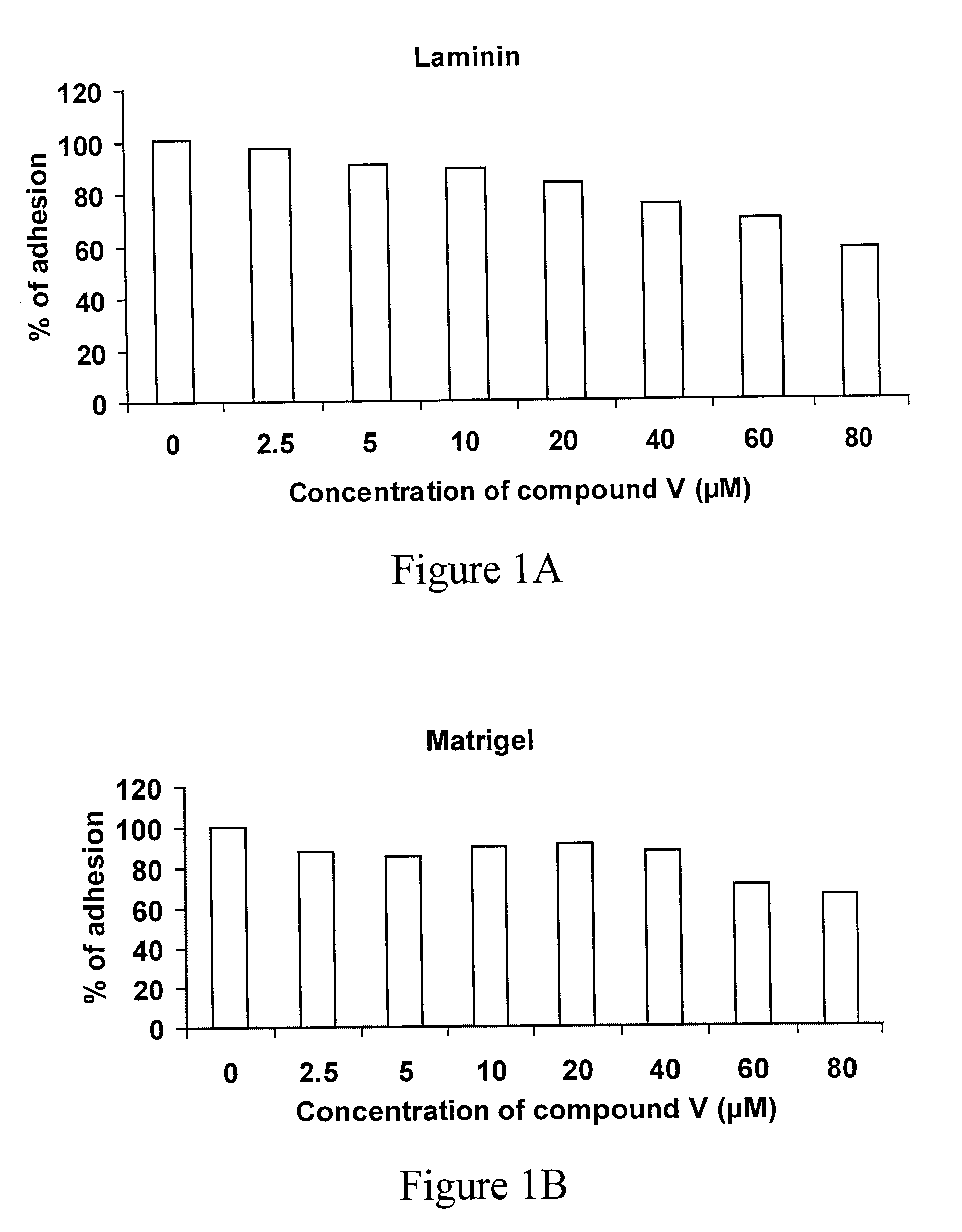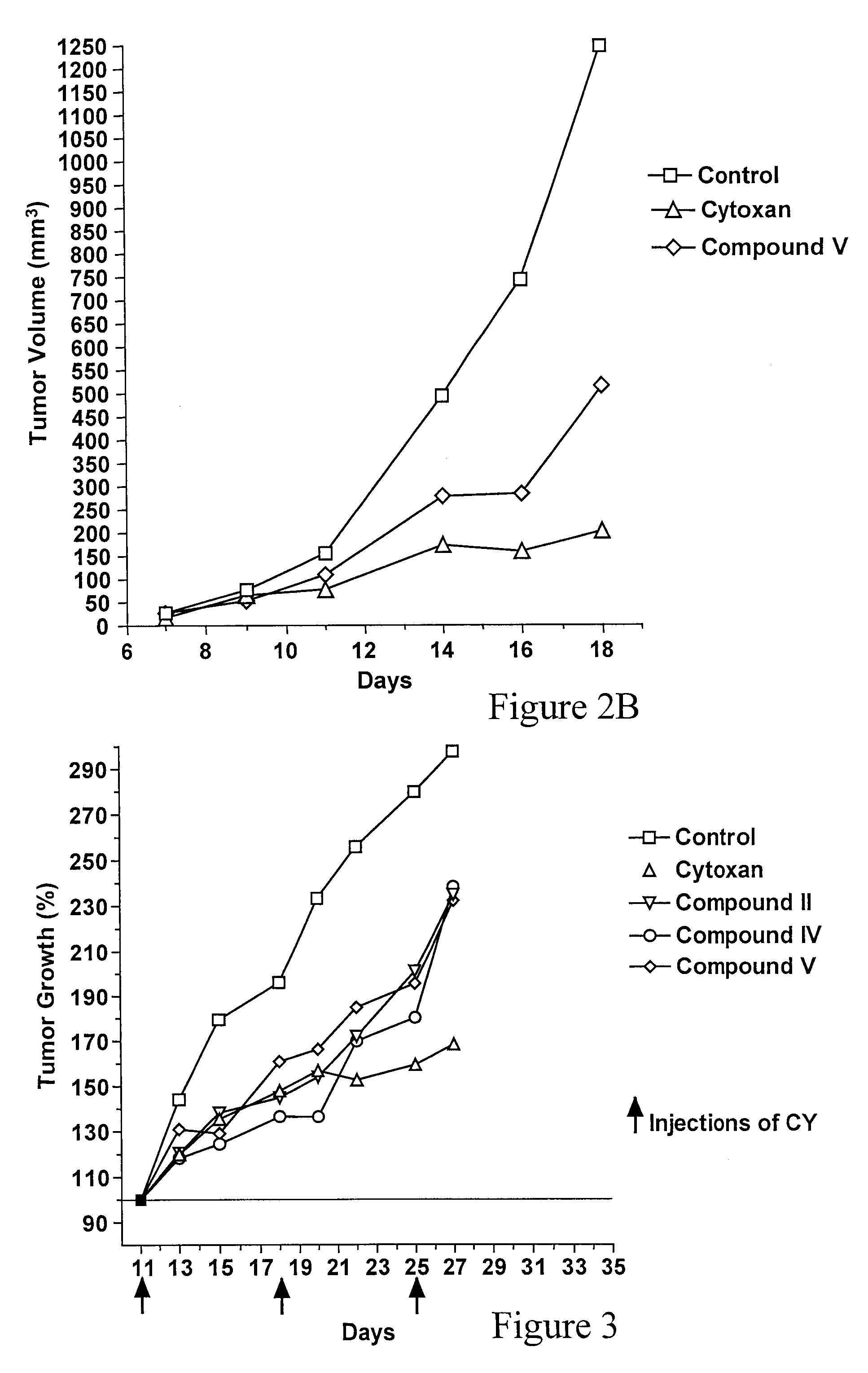Triazine Derivatives, Compositions Containing Such Derivatives, and Methods of Treatment of Cancer and Autoimmune Diseases Using Such Derivatives
- Summary
- Abstract
- Description
- Claims
- Application Information
AI Technical Summary
Benefits of technology
Problems solved by technology
Method used
Image
Examples
example 1
Synthesis of Compound I (Representative Example of Route 1)
[0057]
[0058]Cyanuric chloride (10.0 g, 54.2 mmol) was added in small portions to a cooled (−10° C.) mixture of water (50 ml) and acetone (50 ml). A solution of the 3-fluoroaniline (5.2 ml, 54.2 mmole) in acetone (50 ml) was added slowly over 50 min, maintaining the temperature of the reaction below −5° C. The reaction was then stirred at ambient temperature for one hour. The pH of the reaction was adjusted from 2 to 8 with saturated aqueous sodium bicarbonate (200 ml), and stirring was continued for a further 30 min. The precipitated solid was collected by filtration, washed with water and dried in vacuo. This gave 2,4-dichloro-3-fluorophenylamino-1,3,5-triazine as a white solid: 13.3 g, 94% yield; 1H NMR (400 MHz, d6-DMSO): δ 6.97-7.01 (1H, m), 7.38-7.43 (2H, m), 7.52-7.55 (1H, m), 11.25 (1H, br); LRMS (ESI): m / z 259 (MH+); HPLC (method 2): 4.1 min. The product was used in the next step without further purification. This di...
example 2
Synthesis of Compound V (Representative Example of Route 2)
[0059]
[0060]2,4-Dichloro-4-fluorophenylamino-1,3,5-triazine was prepared in accordance with Example 1 using 4-fluoroaniline (18 ml, 190 mmol) replacing 3-fluoroaniline to yield a white solid: 44.3 g, 90% yield; 1H NMR (400 MHz, d6-DMSO) δ; LRMS (ESI): m / z 259 (MH+) HPLC (method 2): 4.0 min. The dichloro-triazine (44.2 g, 0.2 mole) was coupled with tyramine (35.1 g, 0.3 mole) according to Example 1 with tyramine replacing 5-(tert-butoxycarbonylamino)pentylamine to yield a white solid: 56.1 g, 91% yield; LRMS (ESI): m / z 360 (MH+), 382 (MH+Na); HPLC (method 2): 3.7 min. A solution of the monochlorotriazine (15.0 g, 41.8 mmole) and 1,5-diaminopentane (24.5 ml, 209 mmole) in tetrahydrofuran (125 ml) and methanol (60 ml) was divided into nine portions. Each portion was heated in a chemistry microwave apparatus at 130° C. for 10 min. The portions were then recombined, concentrated in vacuo, and the residue dissolved in ethyl acetat...
example 3
Compound II
[0061]The above compound was prepared in accordance with Example 1 using 4-[2-aminoethyl]benzene-sulfonamide instead of tyramine. White solid, 77% yield; mp 145-147° C.; NMR (400 MHz, D2O) δ 1.14-1.26 (2H, m), 1.33-1.44 (2H, m), 1.46-1.55 (2H, m), 2.64-2.84 (4H, m), 3.04-3.15 (2H, m), 3.33-3.56 (2H, m), 6.68-6.84 (1H, m), 6.88-6.99 (1H, m), 7.09-7.32 (4H, m), 7.44-7.63 (2H, m); 19F NMR (376.5 MHz, CD3OD): δ−114.50 to −113.81 (1F, m); LRMS (ESI): m / z 489 (MO; HPLC (method 2): 1.6 min.
PUM
| Property | Measurement | Unit |
|---|---|---|
| Solubility (mass) | aaaaa | aaaaa |
| Chemotherapeutic properties | aaaaa | aaaaa |
Abstract
Description
Claims
Application Information
 Login to View More
Login to View More - R&D
- Intellectual Property
- Life Sciences
- Materials
- Tech Scout
- Unparalleled Data Quality
- Higher Quality Content
- 60% Fewer Hallucinations
Browse by: Latest US Patents, China's latest patents, Technical Efficacy Thesaurus, Application Domain, Technology Topic, Popular Technical Reports.
© 2025 PatSnap. All rights reserved.Legal|Privacy policy|Modern Slavery Act Transparency Statement|Sitemap|About US| Contact US: help@patsnap.com



